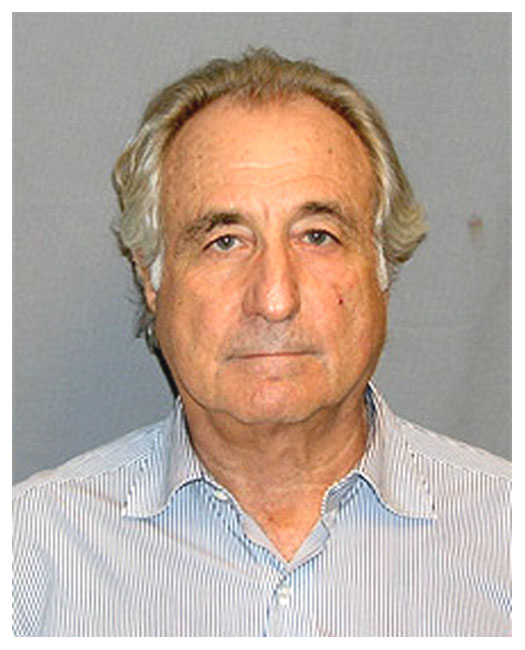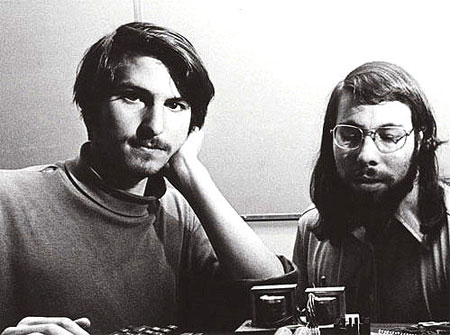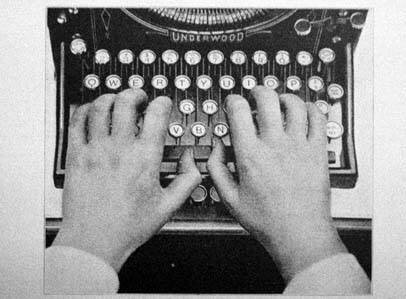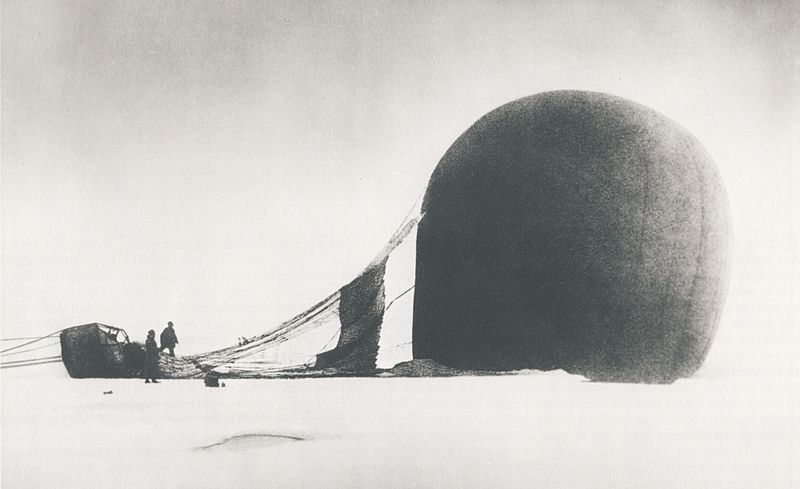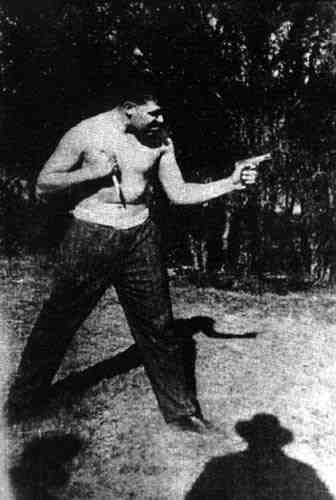A demonstration of Quantum Trapping–and its potential to revolutionize travel–at Tel Aviv University.

"Some of them love human dignity so much that they are ready to legalize torture to defend it." (Image by Ggia.)
The opening of Slavoj Žižek’s new essay about Greece in the London Review of Books, which articulates how we often sacrifice our principles during a fight to preserve those very same principles:
“Imagine a scene from a dystopian movie that depicts our society in the near future. Uniformed guards patrol half-empty downtown streets at night, on the prowl for immigrants, criminals and vagrants. Those they find are brutalised. What seems like a fanciful Hollywood image is a reality in today’s Greece. At night, black-shirted vigilantes from the Holocaust-denying ne0-fascist Golden Dawn movement – which won 7 per cent of the vote in the last round of elections, and had the support, it’s said, of 50 per cent of the Athenian police – have been patrolling the street and beating up all the immigrants they can find: Afghans, Pakistanis, Algerians. So this is how Europe is defended in the spring of 2012.
The trouble with defending European civilisation against the immigrant threat is that the ferocity of the defence is more of a threat to ‘civilisation’ than any number of Muslims. With friendly defenders like this, Europe needs no enemies. A hundred years ago, G.K. Chesterton articulated the deadlock in which critics of religion find themselves: ‘Men who begin to fight the Church for the sake of freedom and humanity end by flinging away freedom and humanity if only they may fight the Church … The secularists have not wrecked divine things; but the secularists have wrecked secular things, if that is any comfort to them.’ Many liberal warriors are so eager to fight anti-democratic fundamentalism that they end up dispensing with freedom and democracy if only they may fight terror. If the ‘terrorists’ are ready to wreck this world for love of another, our warriors against terror are ready to wreck democracy out of hatred for the Muslim other. Some of them love human dignity so much that they are ready to legalise torture to defend it. It’s an inversion of the process by which fanatical defenders of religion start out by attacking contemporary secular culture and end up sacrificing their own religious credentials in their eagerness to eradicate the aspects of secularism they hate.” (Thanks Browser.)
Tags: Slavoj Žižek
From an essay by Gabrielle Esperdy at Design Observer about the Trollope-ish trips across America taken by the late urban theorist Reyner Banham, who loved Los Angeles:
“Once Banham got a driver’s license, the pull of those miles was irresistible, and he spent plenty of time behind the wheel: up and down the California coast, into the deserts and canyons of the Southwest and Texas, across the rust belt and the Midwest, and over and through the northeast megalopolis. There were countless stops in between and along the way, all fully documented in field notebooks, maps, postcards and 35mm slides. Banham visited architectural monuments and natural landmarks, evincing equal interest in the Seagram Building and the Cima Dome. He was attracted to everyday landscapes and out-of-the-way obscurities, supermarkets and motel chains having nearly the same allure as one-off wilderness resorts. He explored thriving commercial centers and abandoned industrial wastelands (and vice versa), lavishing the same attention on a Ponderosa Steak House as on a General Mills grain elevator.
From the Tennessee Valley to Silicon Valley, no building or landscape was unworthy — or safe — from Banham’s formal analysis, socio-cultural critique or outspoken opinionating. He thought the TVA dams with their ‘overwhelming physical grandeur’ were better in real life than in the iconographic New Deal photographs where he had first encountered them, and while he may have sneered at the ‘Redneck Macholand’ in which they were located, he reserved his true scorn for the ‘eco-radicalist’ supporters of the Endangered Species Act who, in the 1970s, prevented the closing of the Tellico Dam sluices in order to preserve the snail darter minnow. The construction of the dam may have looked more arrogant, but Banham wondered if it really was.
The ‘Fertile Crescent of Electronics’ presented no such moral quandaries when Banham visited the sylvan corporate landscapes of IBM, Hewlett-Packard and other now obsolete tech-companies in 1981. Concerns about the environmental impact of all those microchips were still about a decade away and, given his long-standing technophilia, Banham would probably have minimized their significance with the same greater-good rationale he applied to the TVA. While 1981 was early enough in the digital revolution that Space Invaders was cutting edge, it was late enough that Silicon Valley had already produced a ‘better-than-respectable body of architecture.’ The buildings, in Banham’s view, were as sleek, silver and modern as the gadgets designed in the research labs within, an alignment of high-tech imagery and confident industrial consciousness — exemplified by MBT Associate’s IBM’s Santa Teresa campus in San Jose — that Banham considered a cause for celebration. Only the most ‘crass and unobservant’ among the ‘modern-architecture knockers’ and ‘California-mockers’ could possibly disagree.”
Tags: Gabrielle Esperdy, Reyner Banham
Brief 1977 film about laserists and their craft. Dude.
From “The Night the Lights Went Out in Griffith Park,” an L.A. Times article about the first laser-light show for the masses, in 1973: “Before the lights go down, the creator of Laserium, Ivan Dryer, is introduced and receives a lengthy standing ovation. The 62-year-old filmmaker with an astronomy and engineering background saw his first ‘laser light show’ in November 1970, when he was invited to film a demonstration by a Caltech scientist who’d been using a laser in her off hours to create artwork. A month later, he approached officials at the Griffith Park Observatory, where he’d once worked as a guide, with the idea of putting on a show there. For three years, the answer was no, but a new administration warmed to the idea, and Laserium was born.
‘When we first started, there were a whole lot of mistakes to be made,’ recalls Dryer, a tall, wizened, Ichabod Crane of a man. ‘We found that if we made mistakes on cue, on the beat, that was OK with the audience.’There was ‘The John Effect’–if too many toilets were flushed in the bathroom, the water pressure in the water-cooled ion gas laser (which reaches a core temperature of 5,000 degrees) would fail. Dryer also recounts the time his then-partner accidentally touched a high-voltage wire and shocked himself during a show, the audience believing the screaming was part of the entertainment. Similarly, when a fly landed on the lumia lens and began crawling around it, casting a giant sci-fi insect form on the ceiling, the crowd cheered wildly at the clever effect. Rather than swat it away, Dryer says, ‘we wished we could train it and hire it for future shows.’
In the intervening 28 years, laser technology and techniques improved, glitches were removed and new versions came along–Laser Rock, Pink Floyd’s Dark Side of the Moon, Led Zeppelin, Lollapalaser and the final incarnation, Laser Visions, which features ambient/ techno/electronica a la Orb, Enya and Vangelis.”
Tags: Ivan Drye
This post is the final reminder about tonight’s publication party for Jay Ruttenberg’s excellent humor compilation, The Lowbrow Reader Reader, at 7pm at the Housing Works Bookstore in Manhattan. (See details and directions.) There will be great entertainment by Wyatt Cenac of the Daily Show with Jon Stewart, singer-songwriter Adam Green of Moldy Peaches fame, wonderful teen music group Supercute!, and, God willling, a special appearance by the legendary 97-year-old comedian Professor Irwin Corey.
If you could show up, it would really help lift Jay’s sagging spirits. A lot of you don’t know about this, but Jay has been very depressed since late March, when he was punched in the vagina by a hobo. I don’t mean a homeless person who deserves our concern and help, but the kind of archetypal hobo who travels by boxcar and carries his belongings in a bindle and punches men in their vaginas. Let Jay know that you care about his aching ladyparts.
Thanks!
Tags: Adam Green, Fresno Slim, Jay Ruttenberg, Professor Irwin Corey, Supercute!, Wyatt Cenac
A brief analysis of the romantic appeal of Mad Men by the resolutely astute Adam Curtis at the BBC:
“The widespread fascination with the Mad Men series is far more than just simple nostalgia. It is about how we feel about ourselves and our society today.
In Mad Men we watch a group of people who live in a prosperous society that offers happiness and order like never before in history and yet are full of anxiety and unease. They feel there is something more, something beyond. And they feel stuck.
I think we are fascinated because we have a lurking feeling that we are living in a very similar time. A time that, despite all the great forces of history whirling around in the world outside, somehow feels stuck. And above all has no real vision of the future.
And as we watch the group of characters from 50 years ago, we get reassurance because we know that they are on the edge of a vast change that will transform their world and lead them out of their stifling technocratic order and back into the giant onrush of history.
The question is whether we might be at a similar point, waiting for something to happen. But we have no idea what it is going to be.”
Tags: Adam Curtis
RCA initially developed SelectaVision for home video in 1964, but bungled its marketing and distribution for nearly two decades until VHS had rendered it beside the point. Although it contained its content on a disc-shaped object, it was not what we think of as a laser disc that utilizes a beam of light. It was essentially akin to a record player that used a needle to read the info and transmit it to a TV screen. From 1979. before content became invisible:
A story of a Texas bullfight exhibition gone horribly wrong, from the March 9, 1900 edition of the Brooklyn Daily Eagle:
“Austin, Tex.–A desperate riot, which came near resulting in the lynching of several bull fighters, took place at San Luis Potosi, Mex. The affair is described as follows in a letter which reached here today:
The bull fight of Sunday afternoon under the leadership of Jose Marrero of Havana, with seven assistants proved a failure. Five arrogant and valiant bulls had been promised. The first bull led out put up a little show of resistance and was killed, but none of the others would fight at all. The spectators began to hiss and groan and throw oranges, lemons and stones into the ring. Finally the disappointed assemblage tossed the chairs, benches and hand-railings into the ring and then set fire to the pile. This stopped the performance. But even this exhibition of ire did not satisfy the belligerents, who laid violent hands on the bull fighters and were in the act of lynching them when the police interfered.”
Tags: Jose Marrero
In a new WSJ piece, behavioral economist Dan Ariely looks at how almost everyone is duplicitous and how widespread small-scale cheating aggregates to trump Madoff-sized indiscretions. An excerpt:
“We tend to think that people are either honest or dishonest. In the age of Bernie Madoff and Mark McGwire, James Frey and John Edwards, we like to believe that most people are virtuous, but a few bad apples spoil the bunch. If this were true, society might easily remedy its problems with cheating and dishonesty. Human-resources departments could screen for cheaters when hiring. Dishonest financial advisers or building contractors could be flagged quickly and shunned. Cheaters in sports and other arenas would be easy to spot before they rose to the tops of their professions.
But that is not how dishonesty works. Over the past decade or so, my colleagues and I have taken a close look at why people cheat, using a variety of experiments and looking at a panoply of unique data sets—from insurance claims to employment histories to the treatment records of doctors and dentists. What we have found, in a nutshell: Everybody has the capacity to be dishonest, and almost everybody cheats—just by a little. Except for a few outliers at the top and bottom, the behavior of almost everyone is driven by two opposing motivations. On the one hand, we want to benefit from cheating and get as much money and glory as possible; on the other hand, we want to view ourselves as honest, honorable people. Sadly, it is this kind of small-scale mass cheating, not the high-profile cases, that is most corrosive to society.”
Tags: Dan Ariely
From a Guardian article about superstar psychologist Daniel Kahneman, an example of the type of questions he asks to poke holes in our seemingly natural proclivity for favoring narrative over rational thought:
“Kahneman’s approach to psychology spurns heart-sinking tables and formulae in favour of short, intriguing questions that elegantly illustrate the ways our intuitions mislead us.
Take the famous ‘Linda question’: Linda is a single 31-year-old, who is very bright and deeply concerned with issues of social justice. Which of the following statements is more probable: a) that Linda works in a bank, or b) that Linda works in a bank and is active in the feminist movement? The overwhelming majority of respondents go for b), even though that’s logically impossible. (It can’t be more likely that both things are true than that just one of them is.) This is the ‘conjunctive fallacy,’ whereby our judgment is warped by the persuasive combination of plausible details. We are much better storytellers than we are logicians.”
Tags: Daniel Kahneman
broke my turtle/fish tank. anyone can drop one off for a price? – $30 (soho/i know this is a weird request)
My poor turtle and fish and shrimp are in a salad bowl right now, because I was cleaning their habitat, scrubbed to hard and cracked the glass. Look at this handsome little dude, he needs a new casa. A 10 or 12 gallon LONG tank would be perfect, but any comfy home besides the glass bowl will be better. It would be a miracle if someone could help me out tonight. I will pay you of course.
If you are even considering this, I thank you gracefully…
I’ve attached some pics from happier days (when they weren’t living in a saladbowl).
A needleless injection system, just patented by MIT, delivers medicine to the bloodstream through a hypospray. From Dvice: “MIT has developed an injection system that uses a powerful magnetic piston to push a near-supersonic dose of medication straight through your skin into your body. The drugs themselves are carried along on a blast of air that’s skinnier than the proboscis of a mosquito, which means that you can’t feel it at all. In fact, it doesn’t even leave a mark, which means that it can be used on your eardrums or even your eyeballs without causing any damage.”
The opening of “Divine Inspiration,” Jeet Heer’s new article in The Walrus about the religious underpinnings of Marshall McLuhan’s vision:
“APPROPRIATELY ENOUGH, a century after his birth in 1911, Marshall McLuhan has found a second life on the Internet. YouTube and other sites are a rich repository of McLuhan interviews, revealing that the late media sage still has the power to provoke and infuriate. Connoisseurs of Canadian television should track down a 1968 episode of a CBC program called The Summer Way, a highbrow cultural and political show that once featured a half-hour debate about technology between McLuhan and the novelist Norman Mailer.
Both freewheeling public intellectuals with a penchant for making wild statements, Mailer and McLuhan were well matched mentally, yet they displayed an appropriate stylistic contrast. Earthy, squat, and pugnacious, Mailer possessed all the hot qualities McLuhan attributed to print culture. Meanwhile, McLuhan adopted the cerebral and cavalier cool approach he credited to successful television politicians like John F. Kennedy and Pierre Trudeau, who responded to attacks with insouciant indifference.
Early on in the program, McLuhan and Mailer tackle the largest possible issue, the fate of nature:
McLuhan: We live in a time when we have put a man-made satellite environment around the planet. The planet is no longer nature. It’s no longer the external world. It’s now the content of an artwork. Nature has ceased to exist.
Mailer: Well, I think you’re anticipating a century, perhaps.
McLuhan: But when you put a man-made environment around the planet, you have in a sense abolished nature. Nature from now on has to be programmed.
Mailer: Marshall, I think you’re begging a few tremendously serious questions. One of them is that we have not yet put a man-made environment around this planet, totally. We have not abolished nature yet. We may be in the process of abolishing nature forever.
McLuhan: The environment is not visible. It’s information. It’s electronic.
Mailer: Well, nonetheless, nature still exhibits manifestations which defy all methods of collecting information and data. For example, an earthquake may occur, or a tidal wave may come in, or a hurricane may strike. And the information will lag critically behind our ability to control it.
McLuhan: The experience of that event, that disaster, is felt everywhere at once, under a single dateline.
Mailer: But that’s not the same thing as controlling nature, dominating nature, or superseding nature. It’s far from that. Nature still does exist as a protagonist on this planet.
McLuhan: Oh, yes, but it’s like our Victorian mechanical environment. It’s a rear-view mirror image. Every age creates as a utopian image a nostalgic rear-view mirror image of itself, which puts it thoroughly out of touch with the present. The present is the enemy.”
••••••••••
The full ’68 McLuhan-Mailer debate the article references:
Tags: Jeet Heer, Marshall McLuhan
In August of last year I put up a post entitled, “Can China, With Its Present Government And Business Structure, Ever Turn Out A Company Like Apple?” I was asking whether a nation that has famously opened countless fake Apple stores could ever create an actual company like the one birthed by Jobs-Wozniak. In the New York Times, the excellent James Fallows wonders similar things in “Can China Escape The Low-Wage Trap?” An excerpt about the downside to China’s meteoric rise:
“Some of the limits and failures are well publicized: among others, the environmental despoliation that has made cancer the leading cause of death in China; the demographic shift caused by the one-child policy that threatens to make China the first society to grow old before it grows rich; and the problems of transparency and accountability in the Chinese governing system, illustrated most recently by the Bo Xilai and Chen Guangcheng cases.
Those, at least, are the problems that get the headlines. But there’s a bigger one, which the Chinese government and public are only now starting to recognize: whether the success of China’s current model is leading toward a ‘low-wage trap,’ in which its outsourcing factories get bigger but don’t necessarily move the country toward the higher tiers of the world economic structure.
PUT differently, will Chinese companies ever go from assembling iPads to fostering future Apples of their own — or, similarly, from selling knockoff copies of Western movies, music, search engines and online apps to establishing China’s own pop-culture industries with worldwide profits and soft-power appeal?
Nearly every Apple product is ‘made’ in China, but barely 10 cents on the Apple sales dollar stay with workers, suppliers or anyone else in te country. The rest goes to designers and shareholders in the United States, component makers in Japan, machine-tool makers in Germany and retailers or shippers around the world. The problem for America with this arrangement is that it disproportionately rewards the top rather than the middle of our income scale. The problem for China is figuring out how to capture more of the rewards to begin with.”
Tags: James Fallows
An Illinois mind reader planned in 1893 to have himself buried alive where he would remain while a crop grew above him. He would then emerge unscathed. There are easier ways to kill yourself. From an article in the August 7th edition in that year’s Brooklyn Daily Eagle:
“Hillsboro, Ill.–The mind reader, A.J. Seymour, is generally known in Illinois and his proposed attempt to be buried and remain in the ground while a crop of barley is grown on his grave creates interest in this state. Dr. E.C. Dunn of Rockford has been selected by Seymour as manager. Dr. Dunn says: ‘There is no question that this feat can be performed. I have seen it performed successfully three times in India, at Allahabad, Delhi and Benares. For several days Seymour will be fed upon a diet of fat and heat producing food. He will then throw himself into a cataleptic state. Their lungs will be filled with pure air to their fullest capacity and the tongue placed back and partially down the throat in such a manner as to completely close the aperture to the lungs. The nose, eyes and ears will be hermetically sealed with wax. After parafine has been spread over the entire body, to close the pores, it will be ready for burial. The body will be put in an extra large casket. This will be placed inside another and both will be perforated, in order that if any poisonous gases exude from the body they may make their escape and be absorbed by the soil. The interment is to be made in a clay soil.'”
Tags: A.J. Seymour, Dr. E.C. Dunn
Some search-engine keyphrases bringing traffic to Afflictor this week:
- You’re invited to the Lowbrow Reader Reader publication party!
- Look at this great side-boob journalism at the Huffington Post.
- I had a conversation with a Birther in a Brooklyn Starbuck’s.
- Old Print Article: Doctors make artifical noses from human flesh (1888).
- Classic Photography: Andrée Falls Short Of His Goal (1897).
- Featured Videos: Dick Cavett and Eddie Murphy discuss the N-word (1985) + Viewtron was an early online service (1983) + Edward R. Murrow points his cameras at MIT’s computer room (1951) + MIT reaserchers have created a low-cost virtual-reality system + Advertising ledgend David Ogilvy meets David Letterman (1983) + William F. Buckley and B.F. Skinner discuss Behaviorism and freedom (1971) + Robert Hughes examines Marcel Duchamp’s meta-machine (1982) + George Plimpton plays goalie for Bobby Orr (1985) + Future energy sources in America (1970s) + Promotional trailer for the Pink Floyd’s Tonite Let’s All Make Love in London (1967).
- Recently Posted on NYC’s Craigslist: When I say “vinyl LP albums,” I mean “panties” + One of my roommates is Dutch + I wonder why my kid is such a smartass + Pay me $3300 to kill you.
- Fran Lebowitz thinks small children are like talking animals.
- Lebowitz was especially honest about race in America in 1997.
- Hologram assistants are being installed at NYC airports.
- Abraham Lincoln was our first tech-friendly President.
- Philosopher David F. Skrbina has become sorta friendly with the Unabomber.
- Authoritarian regimes recalibrate for the Internet Age.
- To H.G. Wells, Utopia wasn’t a place where everything was perfect.
- Raffi Khatchadourian examines a case of face transplantation.
- Zero-gravity design will be necessary to build hotels in outer space.
- Driverless vehicles will clean the environment and make roads safer.
- George Saunders visited Dubai before recession slowed down its boom.
- Robert Zubrin thinks we worry too much about astronauts dying in space.
- Cornell West thinks President Obama worries too much about his legacy.
- William Friedkin explains how Hollywood has changed since the ’70s.
- Serial killers have been aided by car culture and glorified by pop culture.
- John Sculley explains why Apple’s Newton digital assistant failed.
- The recent renaissance in demography has been notable for a shift in focus.
- Gambling on soccer has gotten completely out of control.
- Alex Pareene looks at the political subtext of TED.
- Sci-fi writer Elizabeth Moon thinks we should all get barcodes at birth.
- A brief note from 1900 about a sneezing man.
- A brief note from 1873 about a manure wagon.
- A brief note from 1850 about a French aeronaut.
- This week’s Afflictor keyphrase searches.
Nils Strindberg, the photographer responsible for these two classic pictures of the Andrée Polar Expedition of 1897, was dead long before the film was developed. Strindberg, fellow crew member Knut Frænkel, and exploration leader, Salomon August Andrée, all succumbed to freezing conditions several months after a ballooning crash stranded them far from their destination. (The film they shot of their struggles wasn’t recovered until 1930, when their mysterious disappearance was finally solved.)
Salomon August Andrée, born in 1854, was a Swedish engineer, physicist and his country’s first aeronaut. He longed to reach the North Pole and set out with that goal in mind in the hydrogen balloon Örnen (or Eagle). He and his cohorts were ill-prepared in numerous ways and certainly he had deluded himself about the possibility for success, but beneath his bravado the truth nagged at him. Even though the skilled adventurer had been nervous about the dangerous expedition, many weren’t worried when he first lost contact with civilization. They should have been. From the July 26, 1897 Brooklyn Daily Eagle:
“Andrée has not been heard from. His alleged pigeons were somebody else’s pigeons. Nevertheless, there is no cause for alarm. His balloon is the staunchest that ever was made and although gas will leak from an ordinary balloon so that it would be unlikely to stay up for more than a week, there is no reason why his should not float for a month, because it has been made actually tight, is composed of three layers of silk, each oiled, and the outer one was thickly varnished. Only an accident could puncture it so as to allow any rapid escape of gas. The loss of his drag rope may have compelled him to fly higher than he had intended, for he wanted, if possible, to keep at a height of about 600 feet. His brief experience in the air may have modified this intention. From a higher altitude he can overlook a far wider expanse of country and even if portions of it were covered with clouds of fog he would still be able to define his whereabouts with a measure of certainty, which he could not do if he were immersed in the vapors near the sea.
As he is prepared for reasonable emergencies, however, the time for anxiety is not yet. As to his forebodings, they count for nothing. Any body would feel a trifle anxious in undertaking a journey of this kind, especially when he had other lives than his own in his charge; but these glooms were probably dispelled within ten minutes after the balloon had risen into the bracing air above Spitzbergen. If Andrée attains the pole and loses his life in so doing we may get the news of the achievement in some of the ways that he has devised.”
Tags: Andrée, Knut Frænke, Nils Strindberg, Salomon August Andrée
An excerpt (via the Believer: Pt. 1 + Pt. 2) from Killer of the Road: Violence and the American Interstate, Ginger Strand’s hard-boiled book about serial murderers, who’ve been given aid by our car culture and star treatment by our pop culture:
“In June of 1983, Henry Lee Lucas was arrested in Texas for possession of a firearm. Five days later, he confessed to the brutal murder of an elderly neighbor, Kate Rich. If his famous predecessor Ted Bundy evoked the serial killer’s ‘mask of sanity,’ Lucas, a one-eyed former mental patient who had already done time for killing his mother, seemed to embody the monster behind the mask. Born in the backwoods ofVirginia, Lucas was a nasty piece of work. His father, according to stories, was a moonshiner who had passed out on a railroad track in a drunken stupor and had had both legs severed by a passing train. He hopped around legless for a while before dragging his sorry self into the cold one night to freeze to death. Henry’s mother was no better: allegedly a prostitute, she forced her family to watch her meetings with ‘clients,’ it was claimed, and regularly beat her children with a club. Not surprisingly, young Henry’s life of crime began at an early age.
Seemingly remorseless, Lucas admitted upon arrest that he had murdered his elderly neighbor and raped her dead body. But that was only the beginning. Once in custody, he spontaneously began confessing to more murders. First it was 27 women. Then 100. Then 150. Then 165. He offered up the name of his frequent accomplice: Ottis Toole, who was already in jail in Jacksonville, Florida. Police declared that between them, Lucas and Toole were good for at least 28 murders in eight states, including some of what were being called ‘the I-35 killings’—the late-’70s murders of around 20 hitchhikers and women with car trouble along Interstate 35 in Texas. By October of 1983, Lucas was admitting to 200 murders. Then Ottis Toole—perhaps greedy to share some of that airtime—confessed to having killed Adam Walsh. The son of a wealthy Florida hotel developer, six-year-old Adam had been kidnapped in 1981 from a Florida shopping mall. When Adam’s severed head turned up sixteen days later, his father, John, dedicated his life to preventing crimes against children. John Walsh went on to found the National Center for Missing and Exploited Children, and would eventually find his niche as host of the Fox network’s longest-running program, America’s Most Wanted.
The Lucas confessions picked up where Ted Bundy left off. Exaggerated though they turned out to be, the confessions of Lucas and Toole confirmed what many already believed: the nation was being haunted by traveling murderers.”
Tags: Ginger Strand
Since I put up posts this week about Fran Lebowitz and George Plimpton, it makes sense to offer this excerpt from Lebowitz’s 1993 Paris Review Q&A, in which her maternal nature rears its ugly head:
“INTERVIEWER
Young people are often a target for you.
FRAN LEBOWITZ
I wouldn’t say that I dislike the young. I’m simply not a fan of naïveté. I mean, unless you have an erotic interest in them, what other interest could you have? What are they going to possibly say that’s of interest? People ask me, Aren’t you interested in what they’re thinking? What could they be thinking? This is not a middle-aged curmudgeonly attitude; I didn’t like people that age even when I was that age.
INTERVIEWER
Well, what age do you prefer?
LEBOWITZ
I always liked people who are older. Of course, every year it gets harder to find them. I like people older than me and children, really little children.
INTERVIEWER
Out of the mouths of babes comes wisdom?
LEBOWITZ
No, I’m just intrigued by them, because, to me, they’re like talking animals. Their consciousness is so different from ours that they constitute a different species. They don’t have to be particularly interesting children; just the fact that they are children is sufficient. They don’t know what anything is, so they have to make it up. No matter how dull they are, they still have to figure things out for themselves. They have a fresh approach.”
Tags: Fran Lebowitz
In honor of the NHL playoffs, here’s a 1985 clip of amateur netminder George Plimpton trying to turn aside the shots of Hall of Famer Bobby Orr.
Tags: Bobby Orr, George Plimpton
Wanted: Penguin
Im looking for a pet penguin thats “chill” (see what I did there) with living in Manhattan as well as with 2 room mates, one of which is dutch. We have a couple of really powerful Air Conditioners and we are getting some quotes from landscapers about putting in a penguin habitat on our roof. We also have a dojo where we hold amateur yoga classes that will help him center his mind body and soul. As far as food goes, we plan on teaching the penguin to hunt for his own meals in the east river. We are extremely confident that we can make this part of the plan work due to my past experience as a swimmer, lifeguard and fisherman. We are willing to listen to trades for this penguin, and we have some really cool stuff.
Serious offers only, I dont mess around when it comes to penguins.
A couple of questions from William Friedkin’s new Ask Me Anything on Reddit about the differences between filmmaking in the ’60s and ’70s and today:
IAmWilliamFriedkin: Really, for all filmmakers. The limited scope of the kind of films that can be made.
Tags: William Friedkin










